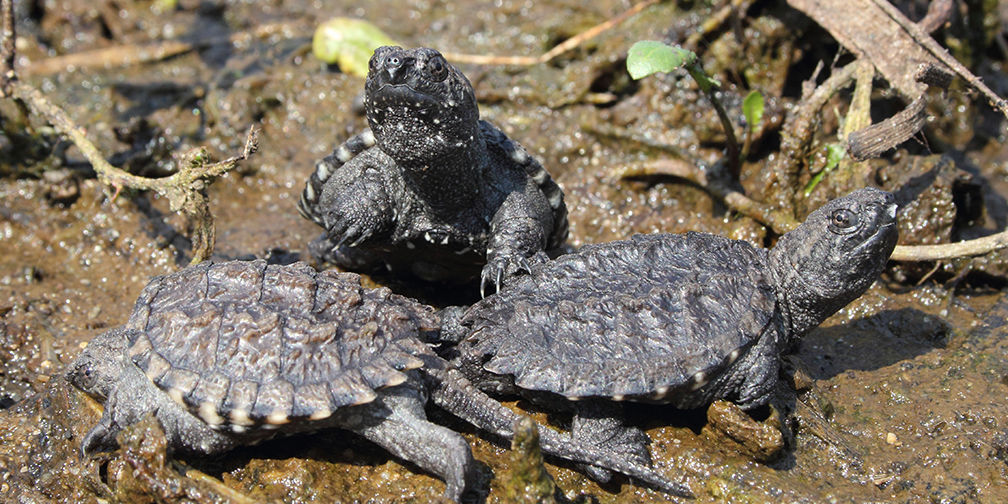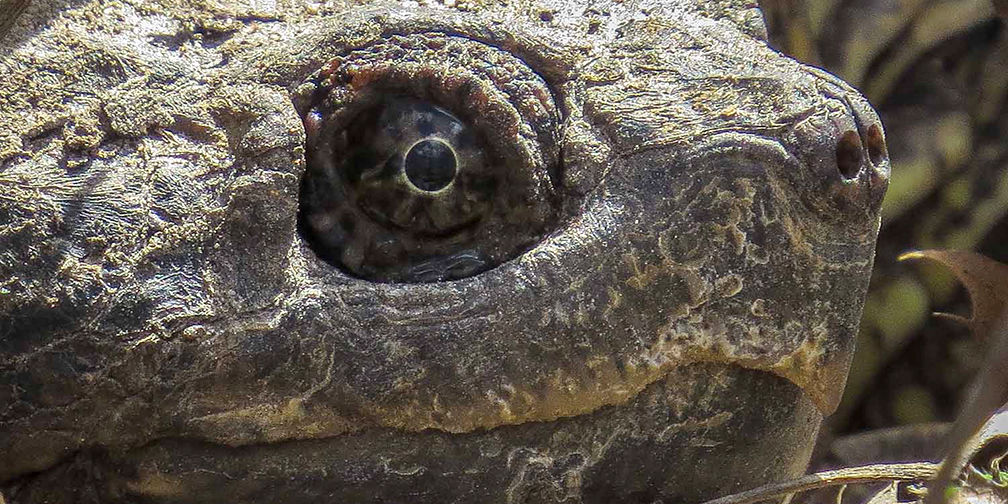Ontario Nature Blog
Receive email alerts about breaking conservation
and environmental news.
© Lora Denis
Snapping turtle © Joe Crowley
This spring a snapping turtle found in Hamilton’s Cootes Paradise was confirmed to have been infected with ranavirus. This potentially devastating virus has killed numerous amphibians, but this is the first time a Canadian reptile has been infected.
What causes ranavirus and how is it transmitted?
Ranavirus is an infectious DNA virus known to infect amphibians, fish and reptiles.
It can be transmitted through food, feces, water and handling by humans. Infections tend to be seasonal, as reptiles are most vulnerable during their juvenile stage. Because of the presence of juveniles, turtles are often infected in late summer and autumn. Unfortunately, ranavirus may persist in the environment for months if conditions allow.

What are the Symptoms of Ranavirus?
The symptoms of ranavirus can include swelling of the eyes, lesions, excess mucus and internal bleeding. However, an infected animal may show no symptoms at all, making it hard to determine the presence of the virus until after the animal has died.
Why should we be concerned if only one turtle is infected?
The snapping turtle population in Ontario is very fragile (It is already a species of Special Concern) due to habitat loss and degradation of its environment. This, combined with how infectious the virus is, could cause major problems for snapping turtles and other turtle species in Ontario.
How can we treat infected reptiles?
Currently, there is no ranavirus vaccine or treatment.

What are some ways we can prevent the spread of ranavirus?
Quarantining infected animals and sterilizing equipment, surfaces and clothes are the best defense against the spread of ranavirus. If you know you will be in contact with reptiles and amphibians, you should adhere to sterilization protocols before and after handling the animals.
A ranavirus outbreak could devastate our already vulnerable turtle populations in Ontario. If you find a turtle or another species that is displaying symptoms, please contact the Canadian Wildlife Health Cooperative (CWHC).
Where can I find more information about the ranvavirus?

Gananoque Lake Nature Reserve © Smera Sukumar
It’s incredibly sad to see so many turtles dying from ranavirus. I would love to see more people getting involved with finding a cure, and you should be going out of your way to share this story on social media. Spreading the word on how to prevent ranavirus from reaching more animals would be a great start!